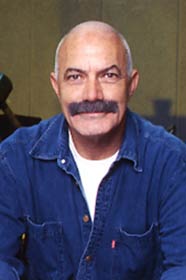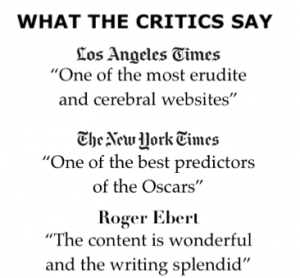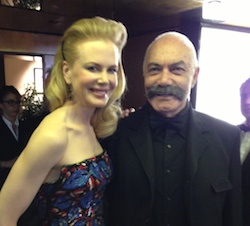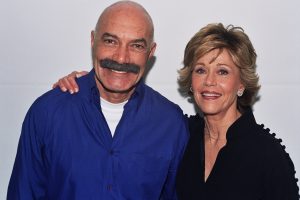Screenwriter on the Donkey Leads: “Like Tom Cruise, They Do Their Own Stunts”
Vet Polish writer-director Jerzy Skolimowski and writing partner Ewa Piaskowska talk about the animal performers they worked with on the set of their Oscar-nominated film.

Then, on holiday in Sicily over Christmas, they stumbled on a reenactment of the biblical story of the birth of Jesus. The manger scene involved hundreds of extras, both human and animal. “There were chickens and geese, pigs and sheep. A cow. It was a whole zoo,” Skolimowski recalls. “In the midst of this enormous cacophony, in the corner, I noticed this donkey: standing without making a sound, just looking on the whole scene with these enormous eyes and this incredible melancholy.”
Donkeys Enormous Eyes
They knew they’d found their star. “Those two enormous eyes seemed mysterious and nearly metaphysical, like mirrors into the universe,” says Skolimowski. “We knew this is an animal the audience would stay with for a whole film.”
They were right. After premiering in Cannes, where it won the Jury Prize, EO has become a surprise awards favorite, winning the L.A. Film Critics Award for Best Foreign Film, and earning Oscar nomination for the Best International Feature.
Six donkeys playing the eponymous EO?
SKOLIMOWSKI When we saw the Nativity scene in Sicily, I got so excited I wanted to record it on film immediately, so I called my friends in Poland, and within 48 hours we filmed it. We thought that would be the final scene of our film, the donkey ending up in this Christmas pageant. [The scene was eventually cut.] When we flew back to Poland, we realized we were stuck with this special species of donkey, this Sardinian donkey. I called my animal handlers in Poland and asked, “Find me every Sardinian donkey in Poland.” They found three. The first we met was Tako. Then we met this beautiful lady donkey, Hola. They’re the main stars.
Tako the Donkey, Doing All His Stunts, like Tom Cruise
PIASKOWSKA Tako is the action star. When EO is crossing rivers, or walking through the forest, all those sequences, that’s Tako. Like Tom Cruise, he does all his own stunts.
SKOLIMOWSKI But when we needed a beautiful close-up of EO’s eyes or nose, then it’s Hola. About 80 percent of the movie is those two. But for the ending of the film, in Italy, we didn’t want to transport them, because that’s too stressful for them, so we cast two other replacement couples: Marietta and Ettore, and Rocco and Mela. The remaining 20 percent of the movie, it’s the Italian donkeys.
How do you direct a donkey?
SKOLIMOWSKI You don’t. You can’t tell a donkey, “No, pretend to be sad.” It’s about improvisation, trying to create a certain atmosphere and then hunting for your chances. Quite early in the shooting, I understood that the more time I spent with the donkeys, the better results I’ll get on set. So, whenever we had some extra free time, instead of going and having a drink, I hung out in the horse wagons with my donkeys, gently whispering, patting their backs, making friends. Shooting scenes, I’d whisper to them — quietly, so as not to disturb the soundtrack, using that special tone of voice you use with your pets, to make them feel safe and secure.
No Script Readings
PIASKOWSKA There were certainly no script readings, no discussions about motivation — “Why does my character cross the bridge now?”
Donkeys Had Biggest Trailers
But the animals were the VIPs on this set. They had the biggest trailer. Jerzy didn’t even have a trailer because it was low-budget movie. The donkeys were the last to arrive on set and the first to leave. And in picking the entire crew, we made sure we had people who clearly love animals. There was no shouting, no raised voices on set. Everyone had to dance around the animals. It actually made the whole experience incredibly pleasant and joyful.

Isabelle Huppert cameo in the film?
SKOLIMOWSKI She’s a well-known animal lover, so I asked her, based on that fact, if she’d help us out. Her presence really adds to the film — not just her performance, but just adding her name to the film helped us a lot. But you’ll notice that all the human stories in the film have been cut down to the absolute minimum. They are more like vignettes. The humans are secondary. We wanted to tell this story through the donkey’s eyes. That’s why there’s no linear narrative. It’s not structured like a human story.
Giving the donkey’s perspective?
SKOLIMOWSKI We told the story through the donkey’s eyes. We had a few master shots to show the general situation and the other characters, but then we always get to our favorite shot, which is the close-up of the donkey’s eyes and then the reverse angle to show what the donkey sees, to show his point of view. It’s very ambiguous and very mysterious, but definitely a different point of view. Since we can’t have donkey dialogue, I asked my composer, Pawel Mykietyn, to try to get into the donkey’s head and use his music to express the donkey’s inner monologue. Our hope is that you start to identify with the animal and see things from their perspective. I can only say what an effect it had on us. We aren’t vegetarians yet, but now we eat maybe a quarter of the meat we did before making this movie. After making the movie, half of our crew stopped eating meat completely.










